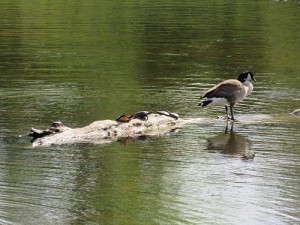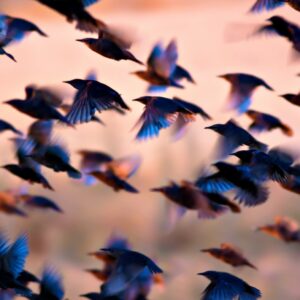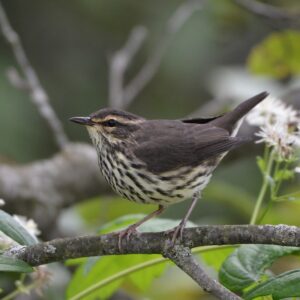Wildlife Status and Summer Birds

Samantha Nurse, Web and Social Media Coordinator
This blog was written by Nature Canada member Steve Gahbauer and edited by Sam Nurse.
The sun is shining, birds are singing and turtles are on the move – summer is just ending! Summer is when nature is at its best, with a profusion of colours, aromas and sounds that delight the senses, and when we can enjoy the many birds that visit us at this time of the year. Summer is also an especially rich time for ocean life. With the long daylight here in the northern hemisphere, abundance builds from the microscopic level as photosynthesis triggers phytoplankton to bloom, providing food for zooplankton, such as krill. Krill then feed small fish, like herring and sand lance, which in turn feed larger fish, up to dolphins and whales.
With the summer months just ending, there were plenty of positive events that occurred! In Nova Scotia, 65 new parks and protected areas were created. A landmark agreement was reached to protect the 6.4 million hectare Great Bear Rainforest in British Columbia. With a new federal and some new provincial governments in place, there is a good chance to move toward a vision to protect half of Canada’s public land, freshwater and oceans. It is encouraging to see early signs of cooperation and a renewed emphasis on science-based decision-making and environmental stewardship. Some examples include:
- a Newfoundland report that calls for a pause in hydraulic fracturing and a large buffer zone to be created around Gros Morne National Park
- In the Rouge Urban National Park more than 30 baby Blanding’s Turtles were released, where they were nearly extinct due to habitat loss and predation
- The federal government announced the relinquishing of 30 existing drilling leases held by Shell Canada to allow for extended ocean conservation in Canada’s Arctic and to preserve the biodiversity of Lancaster Sound

- The federal government also tabled suggestions for a stronger legislation for the 79 km² Rouge Urban National Park. Bill C-18 would add 17 km² to it, make ecological integrity the first priority for park management and fix the flawed Rouge Urban National Park Act that was passed last year;
- Ontario’s 800,000 hectare greenbelt will be expanded by another 9,000 hectares, making developers unhappy but making nature lovers smile. The new areas receiving green belt designation will cover 21 major river valleys, coastal wetlands and woodlots.
There is a also a study the came out compiled by the North American Bird Conservation Initiative called the State of North America’s Birds 2016 Report. It is the first of its kind to look at the vulnerability of bird populations in Canada, the United States and Mexico, and says that 37% of all 1,154 species on the continent need urgent conservation action. More than a third of all North American bird species are at risk of becoming extinct unless significant action is taken, adding that ocean and tropical birds were particularly in danger. More than half the species in oceans and tropical forests are on a special watch list because of small and declining populations, limited ranges and severe threats to their habitats. The outlook for oceanic birds is the bleakest of any North American bird group. Ways to address the problem include expanding protected marine areas and reducing the amount of plastic products that end up in the ocean. Many species in coastal, grassland and arid habitats are declining steeply, in particular long-distance migratory shore birds. Recent estimates count only 20 to 30 breeding pairs of Acadian Flycatcher scattered throughout the fragmented Carolinian forest, making it one of Canada’s most endangered songbirds. The vast majority of them in Canada are found along the north shore of Lake Erie. It’s one of those species, that’s only ‘politically endangered’, i.e., it is quite common and stable in the U.S., so its scarcity in Canada is just a quirk of where the border falls, rather than any statement about the status of the species in principle. On the other hand, Sprague’s Pipit population has declined precipitously throughout its range in the prairies and is now a threatened species in Canada.
Overall, there has been some big changes over these past summer months in the world of nature. To read the current full version and earlier versions of the Nature Notes, check out www.rougevalleynaturalists.com by clicking on “Nature Notes”.



